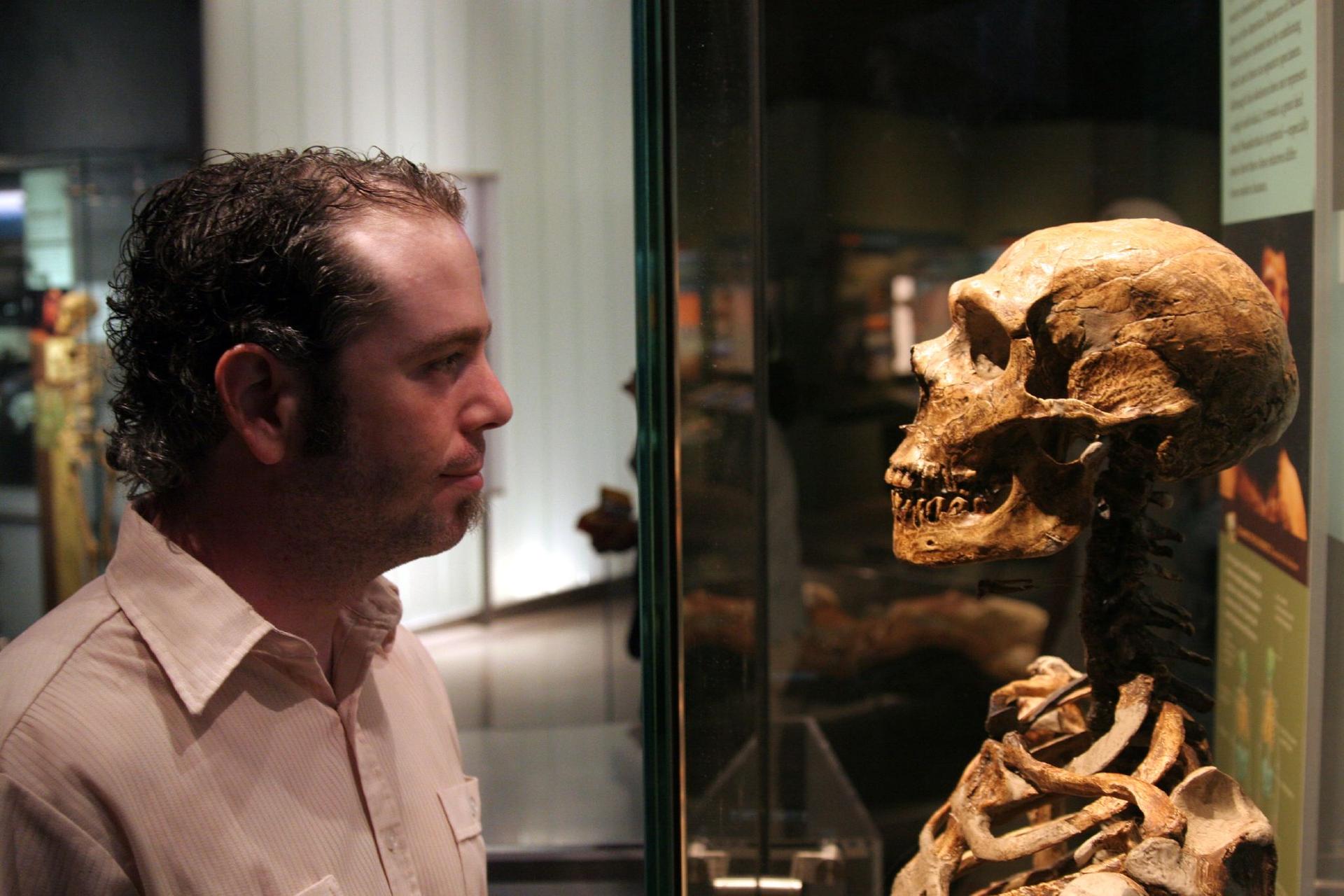A new fossil may date humanity’s ancestor further back than we thought
A man looks at a Neanderthal fossil at the American Museum of Natural History in New York.
Don't call it a "missing link" — Brian Villmoare doesn't like that phrase — but a group of archaeologists including Villmoare has found a new fossil that fills in an important gap in the record of human evolution.
The fossil is a jawbone discovered at a dig in Ethiopia in 2013 by graduate student Chalachew Seyoum. It adds new detail to the history of our ancestors in the Homo genus — which includes modern humans and our closely related ancestor — in a key period between 2 and 3 million years ago. Villmoare, an assistant professor of anthropology at the University of Nevada, Las Vegas, is lead author of a study that describes the new fossil in the journal “Science.”
About 3 million years ago, Villmoare explains, our ancestors were still fairly ape-like: "They had long arms, [were] probably partially arboreal, lived in a forest environment, and if you’d have seen them you would have said, 'Those look like apes.'"
A million years later, things were different. "By the time you get to 2 million years [ago], Homo is large-brained, dependent on stone tools and eating meat," Villmoare says. "Those are sort of the signatures of us."
But no one knows for sure when that transition occured. Finding the 2.8 million-year-old jawbone may help scientists gauge how quickly evolution moved. “The fact that this jaw is at 2.8 [million years old] and looks so much like what we see at 2 [million years] means this transition may have happened fairly rapidly,” Villmoare says.
It also means the dawn of the Homo genus also may have happened earlier than previously thought. Fred Spoor, a paleontologist at University College London, recently wrote a paper on Homo habilus for the scientific journal “Nature” about a computer-based reconstruction of the original “Handy Man” — the Homo habilus fossils found in 1964 that became a reference for the species.
Spoor’s reconstruction determined the jaw was more primitive than was thought, and he started to speculate what its ancestor would have looked like. "We didn’t have any example that would fit,” Spoor said. That is, until that jawbone fossil was discovered. “To our surprise we learned that our answer had been found."
This story is based on interviews from PRI's Science Friday with Ira Flatow
